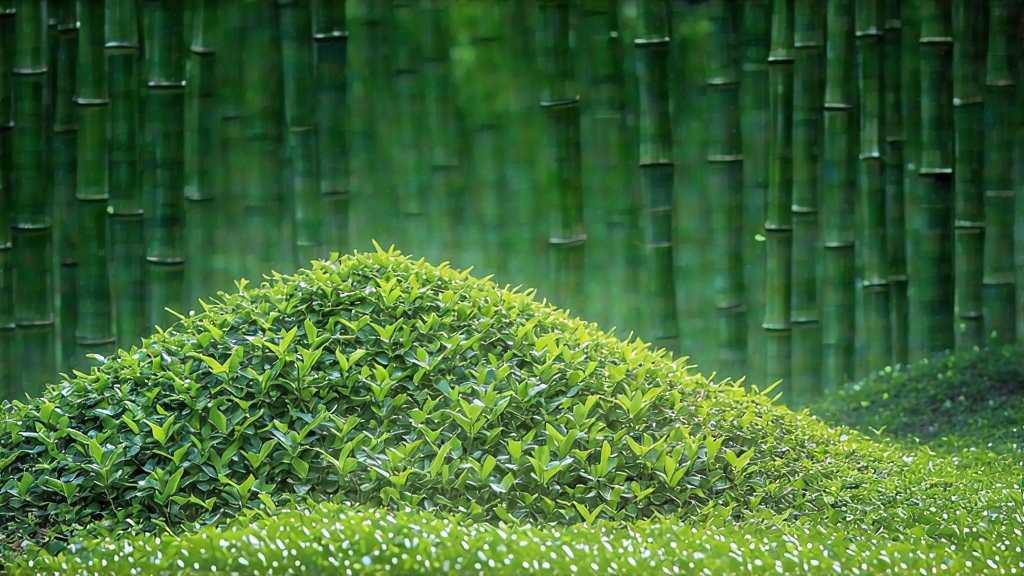
Tucked into the southern folds of China’s Guangxi Zhuang Autonomous Region, the small town of Liubao has given the world a tea that travels through time as effortlessly as it crosses oceans. Liu Bao—literally “Six Forts”—is the least flamboyant yet most wanderlust-driven member of the Chinese dark-tea family. While Pu-erh hoards the limelight, Liu Bao has spent four centuries quietly fermenting in bamboo baskets, sailing on bamboo rafts down the Xun River, and arriving in the humid ports of Hong Kong, Macau, and eventually Southeast Asia, where it became the morning elixir of dockworkers and the secret currency of Chinese medicine halls. Today the same leaf is poured in Berlin specialty cafés and aged in Singaporean wine cellars, proof that a humble frontier tea can outgrow its geography without ever abandoning it.
Historical footprints
The earliest written record appears in the 1661 county gazetteer of Cangwu: “Tea from Liubao, dark, compressed, relieves dampness and fever.” By the Qing dynasty the tea had been crowned gong cha (tribute tea) and loaded onto flat-bottomed boats bound for Guangzhou’s Thirteen Factories, where foreign merchants swapped it for opium and silver. The British East India Company listed it as “Lew-Pow” in 1792 ledgers, noting its resistance to mold on long voyages—an accidental discovery that foreshadowed its modern aging mystique. When the Coolie Trade ferried Cantonese laborers to Malaya in the late 19th century, they carried Liu Bao in tin-lined wooden trunks; the tea’s mellow, earthy liquor reminded them of home and tamed the malarial miasma of rubber plantations. Thus a frontier commodity became diaspora comfort, and Malaysian “Kopitiam” culture still serves it from brass kettles, sweetened with condensed milk, a culinary memory that refuses to fade.
Micro-terroir and leaf architecture
The original six forts—Liubao, Hejie, Wutong, Dachong, Gaojian, and Siping—sit at 24–25° N, straddling the Tropic of Cancer. Granite-derived lateritic soil, annual rainfall above 1,500 mm, and a diurnal mountain-valley wind create a natural greenhouse for the medium-leaf cultivar Camellia sinensis var. sinensis cv. Liubao Quntizhong. The leaf is thinner than Yunnan Da Ye yet thicker than Wuyi rock clones, sporting a downy reverse side that acts like a sponge for microbial spores. Locals insist that the sweet aftertaste—gan in Chinese—comes from wild pollination by the dwarf honeybee Apis cerana, whose hives dot the cliff-side tea gardens. Whether myth or micro-biology, the result is a leaf that invites fermentation the way a violin invites a bow.
Crafting time: from sun-wither to bamboo womb
Harvesting follows the southern Chinese calendar: one bud-two leaves in late April, three leaves in May, avoiding the torrential Dragon-Boat rains. The moment the basket hits the factory floor, the leaf begins its two-act transformation.
Act I—Killing Green & Primary Fixation
A 200 °C drum roaster for 3–4 minutes deactivates PPO enzymes, but leaves a 12–15 % moisture window—higher than green tea—setting the stage for microbial drama. Hand-rubbing along a bamboo tray fractures cell walls just enough; the bruised edges oxidize to a russet rim that connoisseurs call “tiger skin.”
Act II—Wet Pile Fermentation (渥堆)
The hallmark of dark tea. Liu Bao’s pile is modest—usually 500–800 kg, one-tenth the size of a Pu-erh heap—allowing tighter control. Workers sprinkle mountain spring water (pH 6.2, rich in manganese) to reach 28 % moisture, cover the mound with jute sacks, and insert bamboo vents every 30 cm. Over 25–35 days internal temperatures cycle between 45 °C and 55 °C, orchestrated by a microbial consortium dominated by Aspergillus niger, Blastobotrys adeninivorans, and a unique yeast Cyberlindnera jadinii CB1, isolated in 2018 by Guangxi University. Every 48 hours the “pile master” turns the tea, sniffing for the switch from grassy to dried jujube,